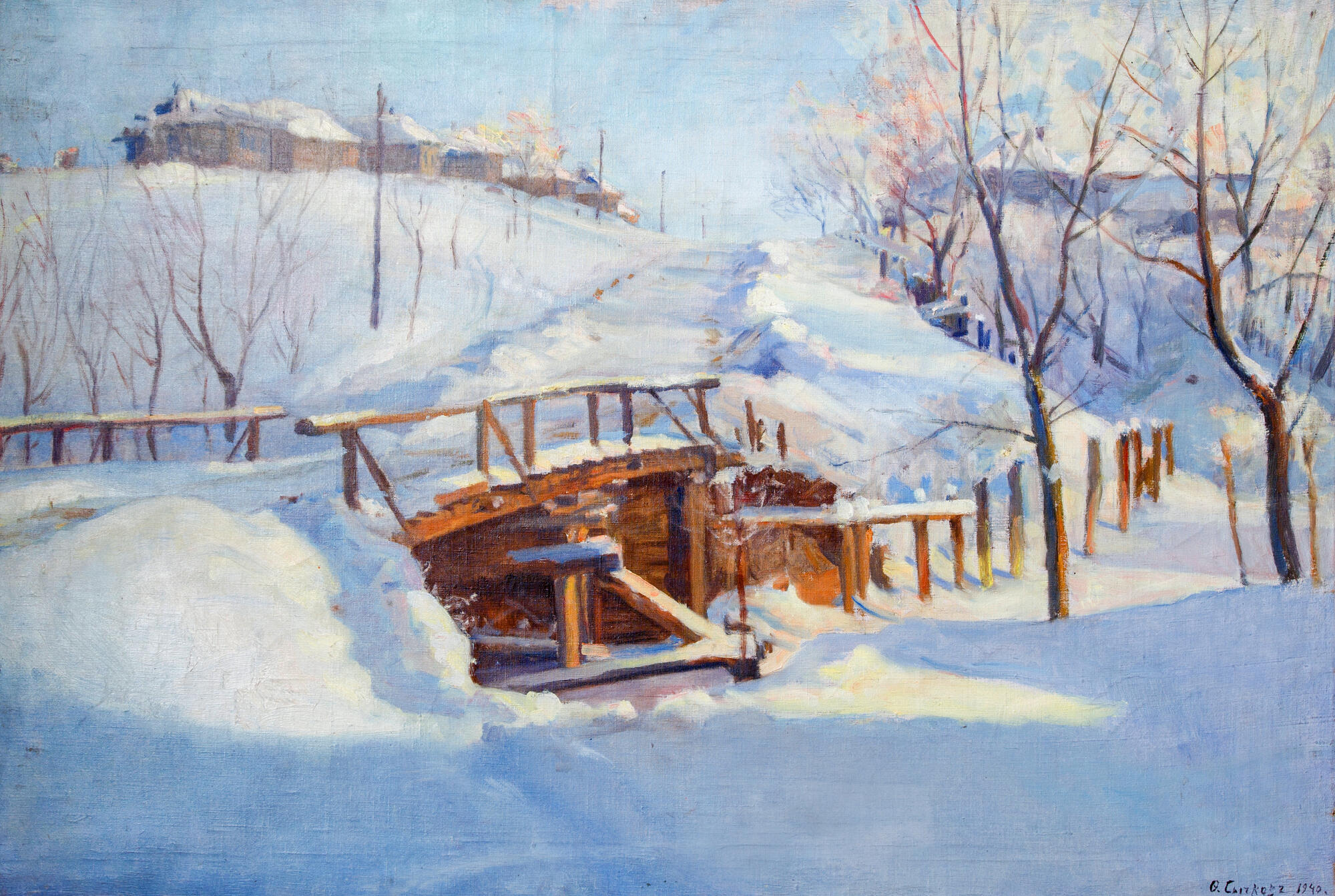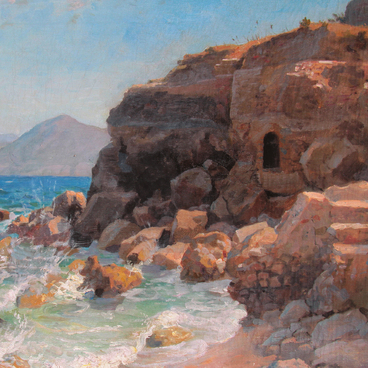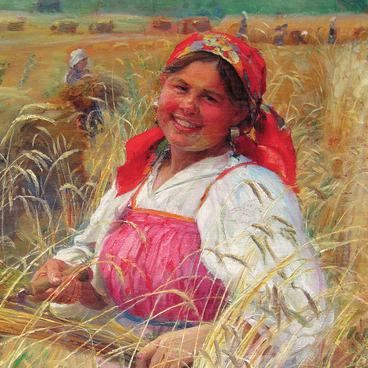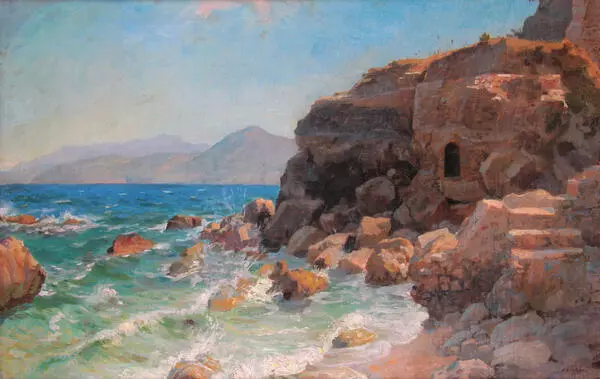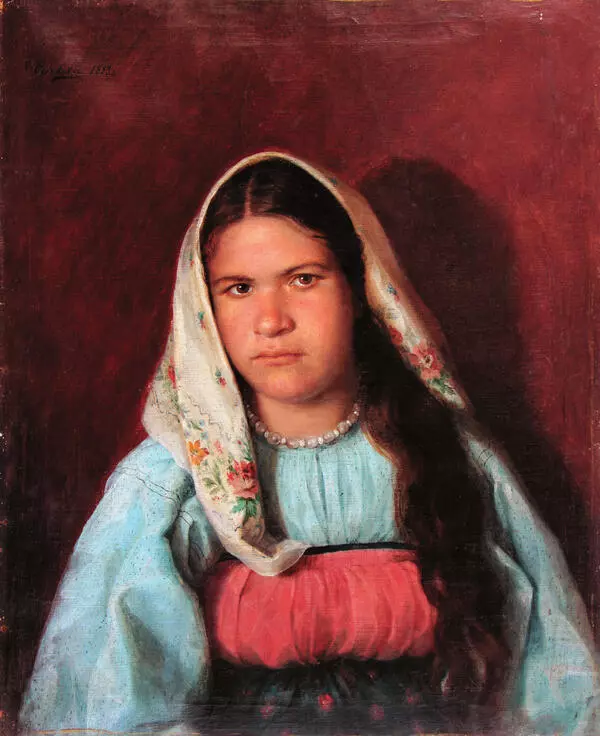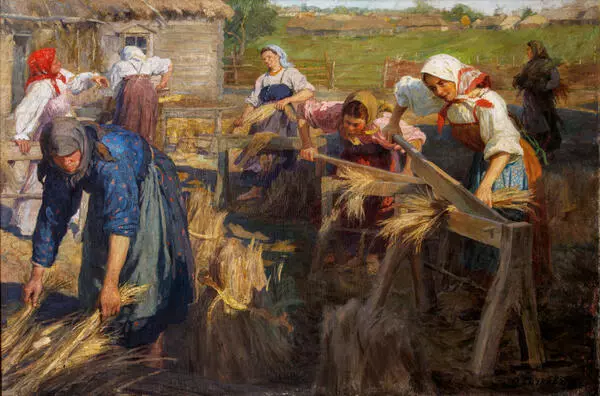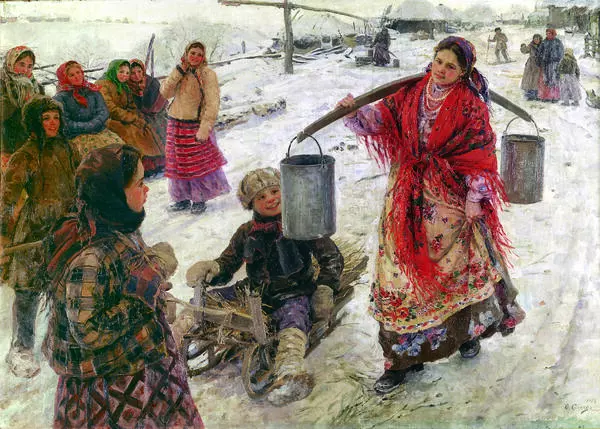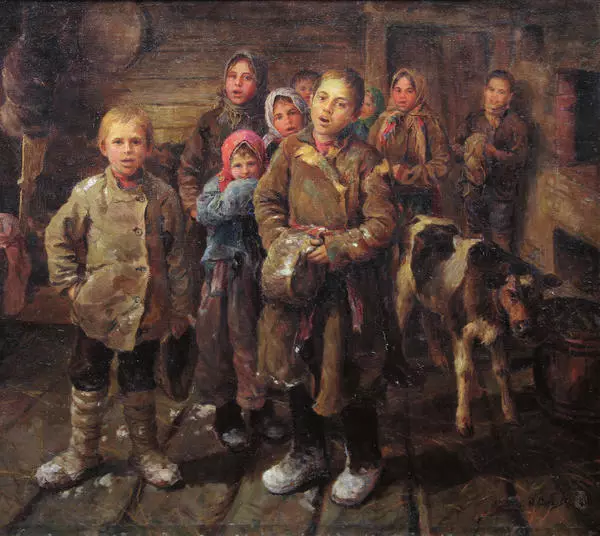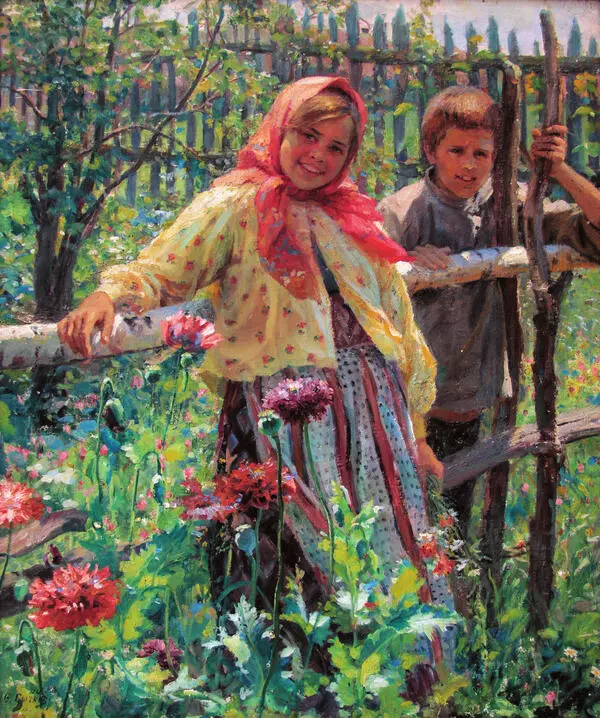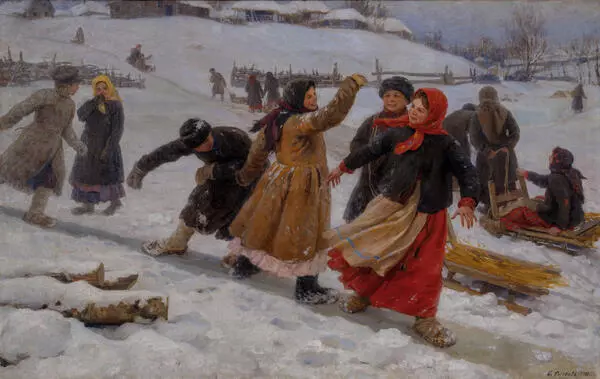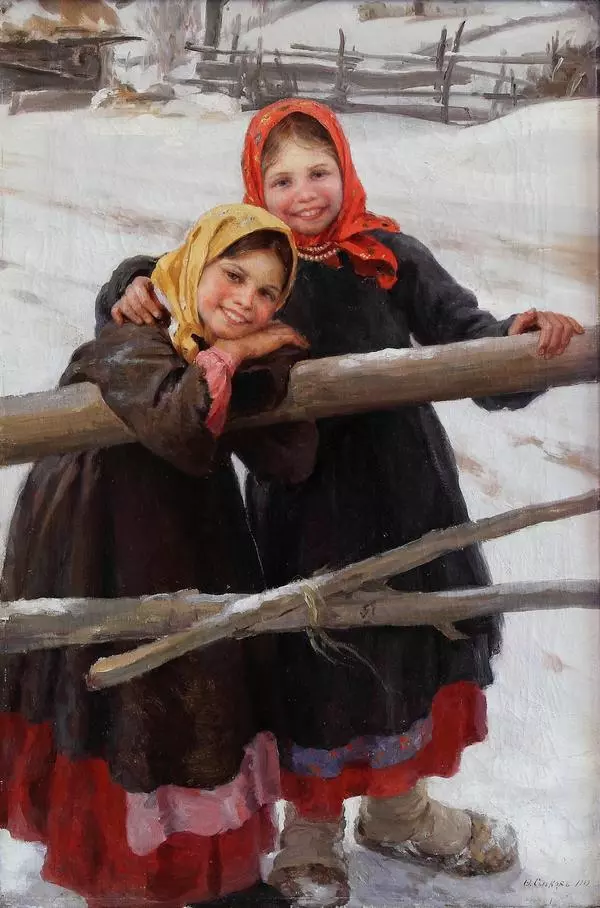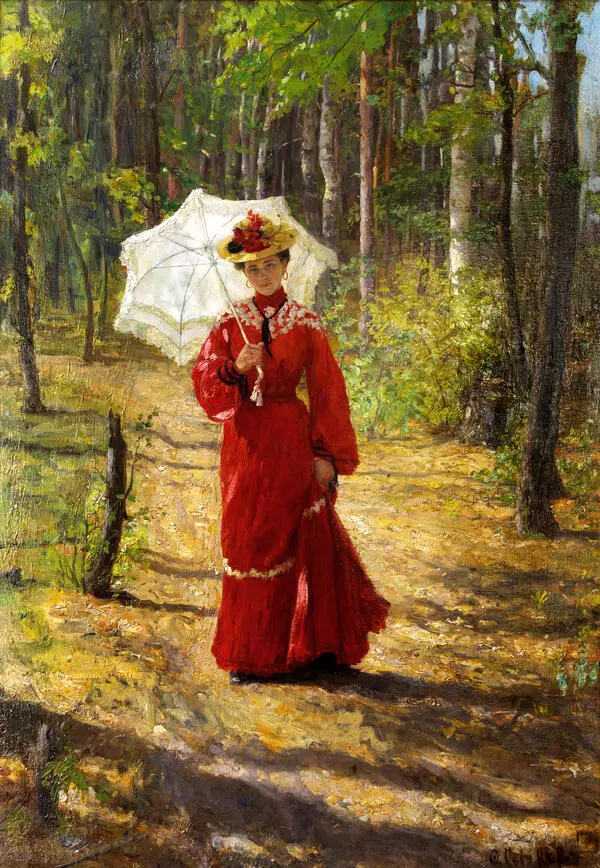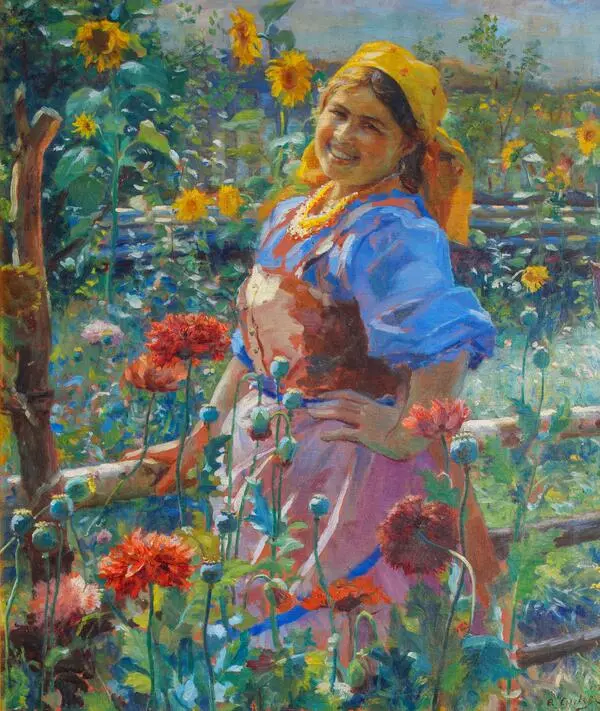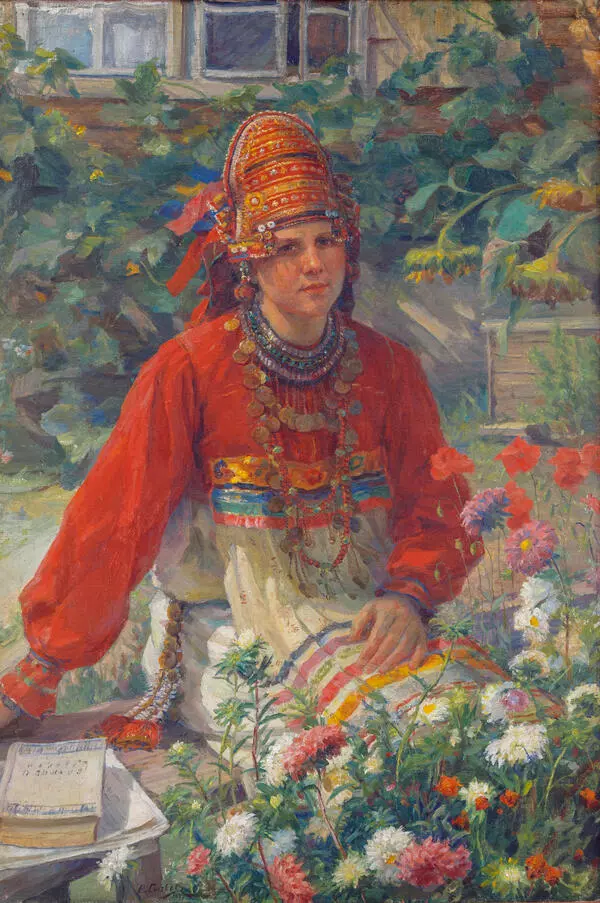Fedot Sychkov painted ‘Winter Road’ in 1940. He depicted a snowy street in the Kochelayevo village. In the foreground, the artist painted a wooden bridge. On the sides of the street are wooden houses and trees covered with frost and illuminated by the sun.
Landscape painting was of secondary importance to the artist. He used landscape sketches to paint backgrounds for his future paintings of a different genre. ‘Winter Road’ belongs to the few ‘pure’ landscapes in the legacy of the painter.
The Russian village of Kochelayevo in the Narovchatsky district of the Penza governorate was already quite large at the time of the artist’s birth. There were 546 houses, a post station, a fair, a bazaar, a pier on the river, a church of the Life-Giving Spring, four potash factories, which produced potash (potassium carbonate) that was then used in the industrial production of textiles, soap, and glass) and two creameries. Later two primary schools appeared — they opened separately for boys and for girls and had three grades.
The name “Kochelayevo” comes from the combination of the pre-Christian name Katsia with the Moksha word “lyay” meaning “river”. Mokshans and Erzyas (representatives of the Finno-Ugric people) settled next to the Russians here. They came to the noisy Kochelayevo fairs in national costumes, which Fedot Sychkov liked to depict in his paintings.
Fedot Sychkov’s artistic career started from these places; it is associated with the name of Ivan Arapov. The general was an influential landowner, who contributed to the construction of a railway in the Kovylkinsky district — this gave an impetus to the further development of the region. The commission to paint the foundation of the Arapovo station that was granted to Fedot Sychkov, a talented young man from a poor peasant family, became an important stage in the life of the future artist. The financial support of the general helped him to continue his artistic career.
Sychkov entered the Drawing School of the Imperial Society for the Encouragement of Arts in St. Petersburg with the support of Arapov. He met Ilya Repin there, who became the most important teacher for him. Although Fedot Sychkov lived in St. Petersburg, the vicinities of his native village remained the main source of his inspiration. He often visited the village during his holidays, and after 1917, he returned for good.
Landscape painting was of secondary importance to the artist. He used landscape sketches to paint backgrounds for his future paintings of a different genre. ‘Winter Road’ belongs to the few ‘pure’ landscapes in the legacy of the painter.
The Russian village of Kochelayevo in the Narovchatsky district of the Penza governorate was already quite large at the time of the artist’s birth. There were 546 houses, a post station, a fair, a bazaar, a pier on the river, a church of the Life-Giving Spring, four potash factories, which produced potash (potassium carbonate) that was then used in the industrial production of textiles, soap, and glass) and two creameries. Later two primary schools appeared — they opened separately for boys and for girls and had three grades.
The name “Kochelayevo” comes from the combination of the pre-Christian name Katsia with the Moksha word “lyay” meaning “river”. Mokshans and Erzyas (representatives of the Finno-Ugric people) settled next to the Russians here. They came to the noisy Kochelayevo fairs in national costumes, which Fedot Sychkov liked to depict in his paintings.
Fedot Sychkov’s artistic career started from these places; it is associated with the name of Ivan Arapov. The general was an influential landowner, who contributed to the construction of a railway in the Kovylkinsky district — this gave an impetus to the further development of the region. The commission to paint the foundation of the Arapovo station that was granted to Fedot Sychkov, a talented young man from a poor peasant family, became an important stage in the life of the future artist. The financial support of the general helped him to continue his artistic career.
Sychkov entered the Drawing School of the Imperial Society for the Encouragement of Arts in St. Petersburg with the support of Arapov. He met Ilya Repin there, who became the most important teacher for him. Although Fedot Sychkov lived in St. Petersburg, the vicinities of his native village remained the main source of his inspiration. He often visited the village during his holidays, and after 1917, he returned for good.
